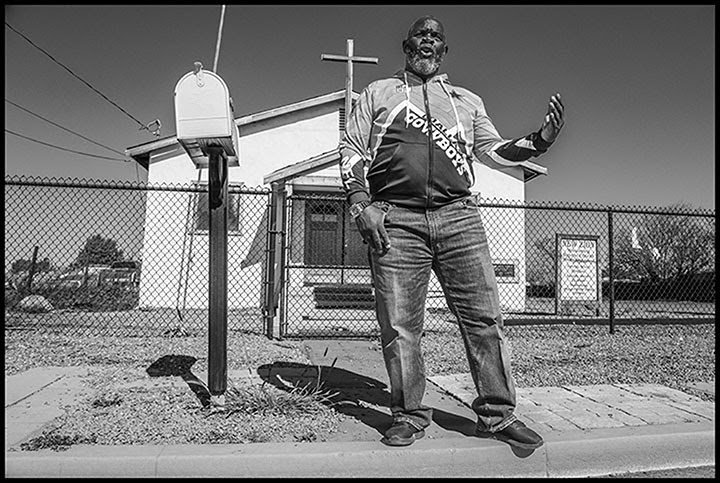

On their own: Vance McKinney, in front of the New Zion Missionary Baptist Church, where the Matheny Tract Committee and the Pratt Mutual Water Company had many of their meetings.
Scattered across California’s San Joaquin Valley are colonias, the unincorporated communities home to some of the Valley’s poorest residents in one of the richest agricultural areas in the world. These communities are overwhelmingly the product of racism and housing discrimination. The history of racial exclusion that led to their existence, however, is not buried safely in the past. Every time a resident turns on a tap to get a drink of water, the contamination of that water, and sometimes the fact that no water comes at all, is a living legacy of exclusion.
Yet these communities are not passive victims of past discrimination. Their organized efforts to win redress in the form of water, sewer service, and even street lighting have forced the state’s politicians to listen up. The resulting legislation may have arrived three quarters of a century after the original exclusion and its consequences, but the colonias are nonetheless celebrating a victory in their long effort to address inequality.
Water access is a critical question in California. Former Governor Jerry Brown declared an official drought in 2014. The state today is even drier, and the declaration is still in force. Teviston, a tiny community established by African Americans in the 1940s, went completely without water for a month last summer when its only well stopped working. Last year, the water table below Teviston dropped 48.9 feet. In Tombstone Territory near Sanger, three wells went dry.
Summer heat in the valley, always fierce, rises to over 115 degrees. Without water, crops would die and workers without work would go hungry. So in California, water access obeys a hierarchy of power that prioritizes agriculture. Growers get the most, annually irrigating 9 million acres with 30 million acre feet of water, or 77 percent of all water directly used by people. Residential and business use comes next, with 8.5 million acre feet consumed mostly in the state’s big cities. Since the 1950s taxpayers have built huge dam and canal systems to service those needs, including the Trinity River Project, the Central Valley Project, the State Water Project, the Colorado River Aqueduct, among others.
THE COLOR OF WATER
By David Bacon
The Nation, 5/2-9/2022
https://www.thenation.com/article/society/the-color-of-water-colonias/
https://economichardship.org/2022/04/the-color-of-water/
The reporting and photography for this story were supported by the Eonomic Hardship Reporting Project.
